When it comes to East Coast travel, a singular avenue dominates all: the grueling I-95 highway, which stretches from the tip of Florida all the way up to Maine. Containing some of the most congested areas of road in the nation, this route may deter, frustrate, or even stall travelers who want to explore a different flavor of the United States. And with airline and rental-car prices surging, families may be left rethinking travel altogether.
But rather than casting aside your vacation dreams, find an alternative solution in the Auto Train! Nothing else in America exists quite like this Amtrak locomotive, which takes riders and vehicles alike on a nonstop route between the DC suburb of Lorton, Virginia, and the Orlando suburb of Sanford, Florida. On this East-Coast tour, you’ll experience a memorable journey you won’t soon forget—even before arriving at your destination.
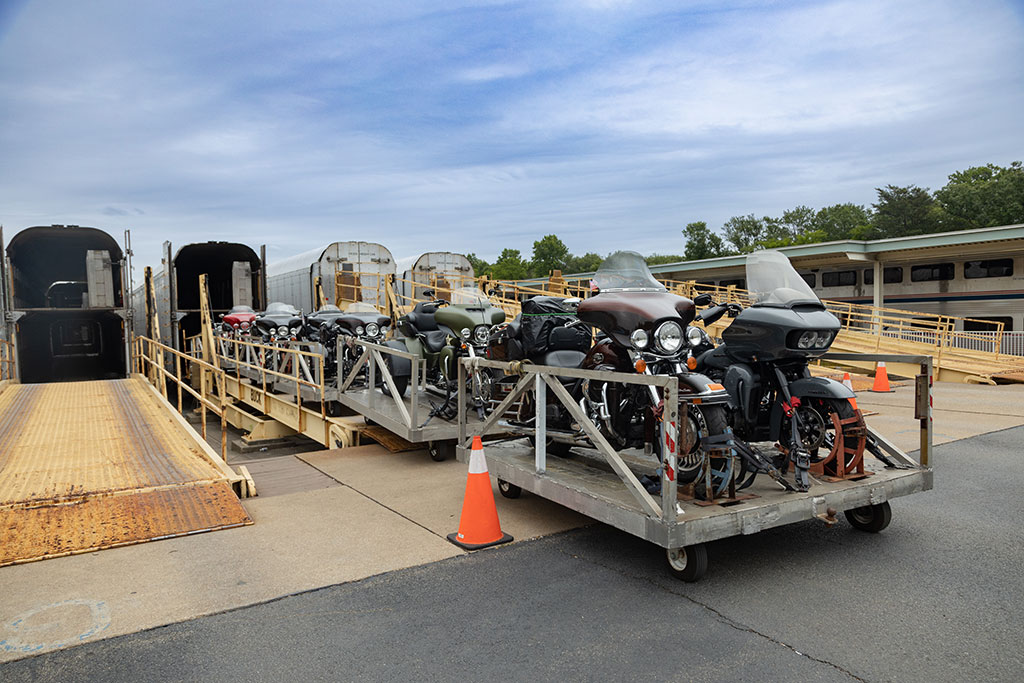
The Auto Train combines the convenience and independence of private car travel with the comfort and old-fashioned thrill of rail commuting. On the day you depart, you’ll simply drop your vehicle off for check-in, at which point it will be loaded onto a massive train car. Meanwhile, you can find your seat and, as Amtrak teases on its website, “settle in with a good book, stream a movie on your tablet, or enjoy the ever-changing views out the window.” Then once at your arrival city, you can venture off with your car to enjoy the rest of your vacation.
Virtually any standard passenger vehicle is welcome on the Auto Train, along with motorcycles, small trailers, and even Jet Skis. And forget the packing limitations and baggage fees of air travel; you can fill your vehicle with any and all travel essentials you may need on your trip, including hefty suitcases, a bike for self-guided tours of DC’s trails, or strollers for long walks in Florida’s theme parks. The Auto Train will ensure that all these goods arrive with you at your final destination.

The Auto Train offers coach fare in its main cabin for as low as $95 per adult passenger plus the cost of a vehicle, which starts at $570 for a round trip with a standard automobile. Though that price may seem high, it may still contend with those of air or vehicle travel, especially if you’re traveling in a group. Even more, its seating design—which features no middle seat, ample legroom, and room to recline—offers a luxurious travel experience you won’t find in the cramped confines of the other modes of travel.
You can get such luxury even in coach, but given that the route is a seventeen-hour overnight trek, it may also be worth it to consider upgrading your accommodations. For instance, a first-class roomette grants access to a private suite with a picture window and two spacious lounge seats, each of which converts into a cozy bed. And larger accommodations, like bedroom suites and family rooms, provide even more space for stretching and sleeping at an additional cost.
Amenities for all first-class options include fresh towels, linens, and pillows, access to an upgraded restroom with a shower, and priority boarding so you can settle in before the crowds. For any special requests, such as ordering your complimentary dinner, simply contact the first-class attendant on board.
Regardless of seating, all passengers on the Auto Train receive numerous alluring amenities, many of which can be found in the Cross-Country Café, a dining car with a rotating selection of food and beverages as well as a complimentary continental breakfast. In addition, it’s easy to stay productive or whittle the time away thanks to the free onboard Wi-Fi (again, forget the superfluous fees of air travel) and outlets at every seat. However, don’t ignore the views out the cabin’s picture windows, which grant delightful sights of the verdant American landscape whirring by. For the best vantage point, kick back in a chair on the train’s lofty second level, where you may also find a more soothing atmosphere.
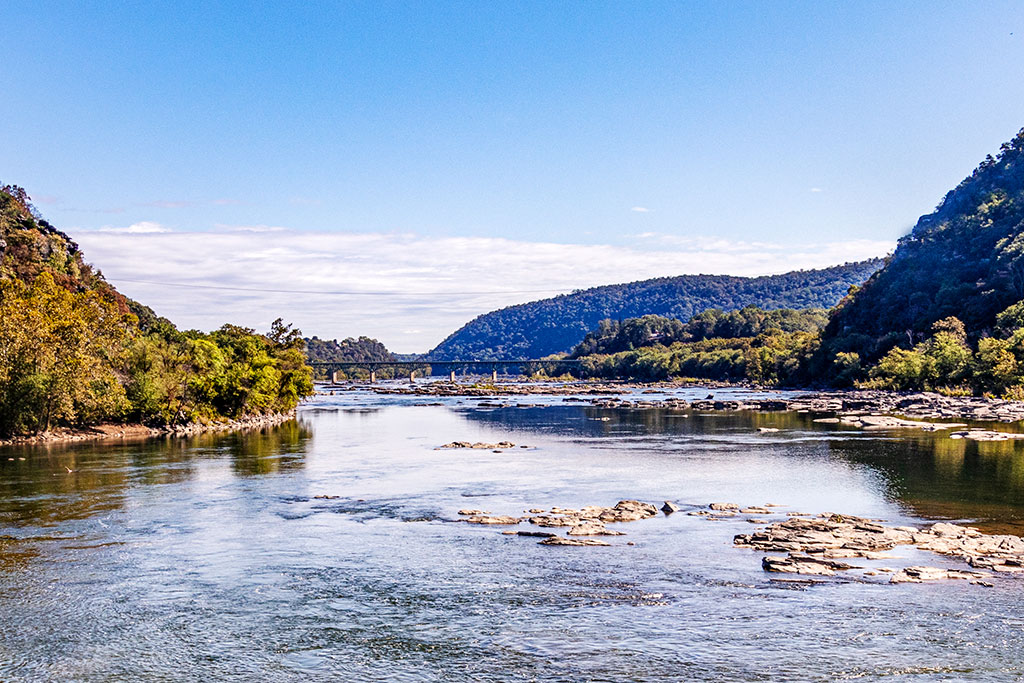
As thrilling as riding the train itself may be, many more amazing experiences await you at either end of the tracks. Take the charming Virginia town of Lorton. Poised on the Potomac River, this destination features lush forests, pristine waterfront views, and tours at nearby historic Mt. Vernon. The ivory-toned landmarks of our nation’s capital are also only a twenty-mile drive away. From institutions like the Smithsonian’s museums and zoo to sites that look back on our nation’s history like the Vietnam Veterans Memorial, this city promises virtually endless sightseeing and entertainment opportunities.
As a bonus, once you arrive in Washington, thousands of other destinations lie within your grasp. You could easily continue your state-skipping journey to some of America’s most culturally vibrant destinations, including Philadelphia, New York City, and Boston.
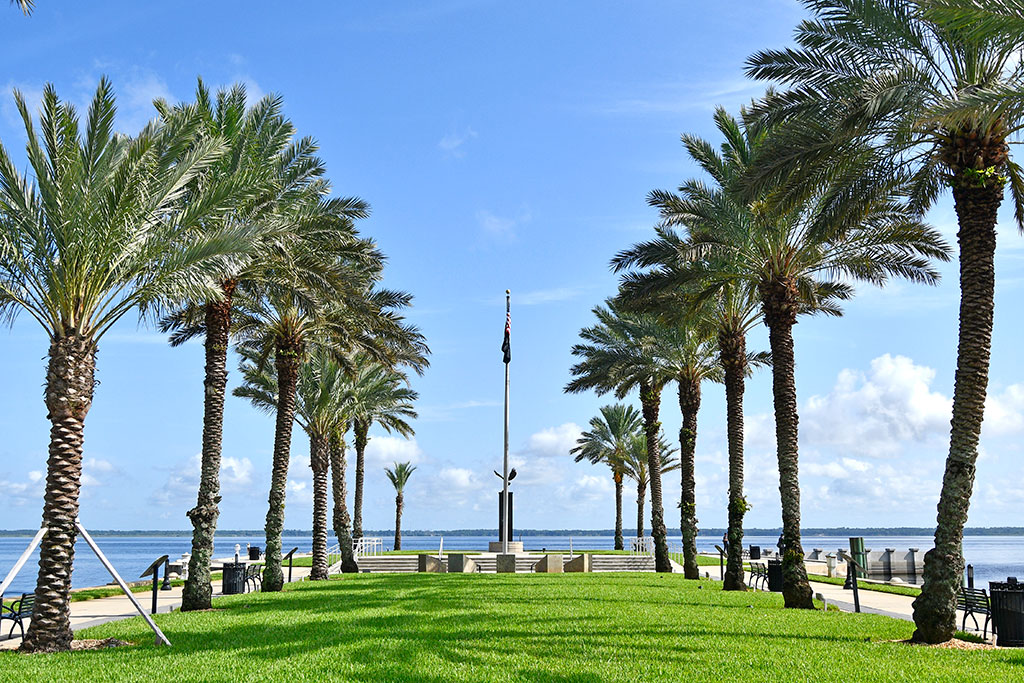
On the other end of the route lies this quaint Florida city, which features a historic downtown district rich in examples of early twentieth-century architecture—you can spot these from a charming (and free) trolley ride. However, Sanford’s biggest draw may be its proximity to Orlando, home to some of the world’s greatest theme parks: Walt Disney World, Universal Orlando Resort, LEGOLAND, and many others. Or if the coast is calling your name, take the breezy one-hour drive east to the white sands of Canaveral National Seashore.
Amtrak’s Auto Train presents a unique way to conduct long-distance travel, combining soothing, stress-free accommodations with the freedom of departing your final destination with your own steering wheel in your grip. And this route does more than help cut down I-95 congestion between DC and Orlando—it has also been a plus for the environment, eliminating ninety-five million miles of vehicle emissions. Relaxing, convenient, luxurious, and green, the Auto Train is the ultimate travel vessel, offering a journey that is easily as compelling as its destinations.
For more info, visit amtrak.com/auto-train-experience
There’s an intangible but special quality to every historic home, one that’s easy to glean simply through a glance. You can imagine the craftsmanship and attention to detail that went into laying each brick and shingle, the countless memories made behind its walls, and the stories it would tell if only it could.
Owning such a home is quite different than admiring it from afar, however. Finding, purchasing, and keeping up with a house of this caliber requires patience and careful planning—but the rewards can be well worth it. If a new build doesn’t speak to you and you’re interested in an older home with a lot of character and significance, this guide explains what you need to know about your future purchase.
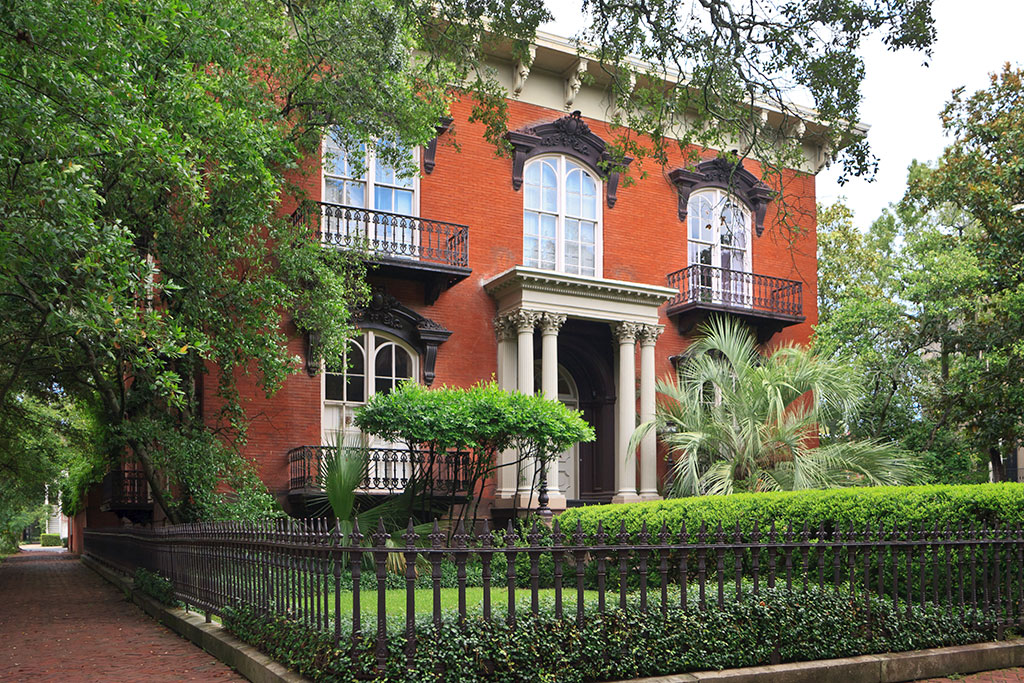
Before diving into the ins and outs of buying and maintaining one of these residences, it’s important to note which homes qualify for a historic distinction. The National Register of Historic Places defines a historic place as one that is associated with events that contributed to our history, is associated with historically significant people, embodies the distinct characteristics of a particular time period or construction method or is representative of the work of a master or distinguishable entity, or has yielded or may yield important information regarding history or prehistory.
A building may also be considered historic if it is located within a designated historic district, even if the home itself does not meet the above criteria. There are currently thousands of historic districts spread across the United States, with some of the most well-known examples being the Charleston Old and Historic District in South Carolina and the French Quarter in New Orleans.
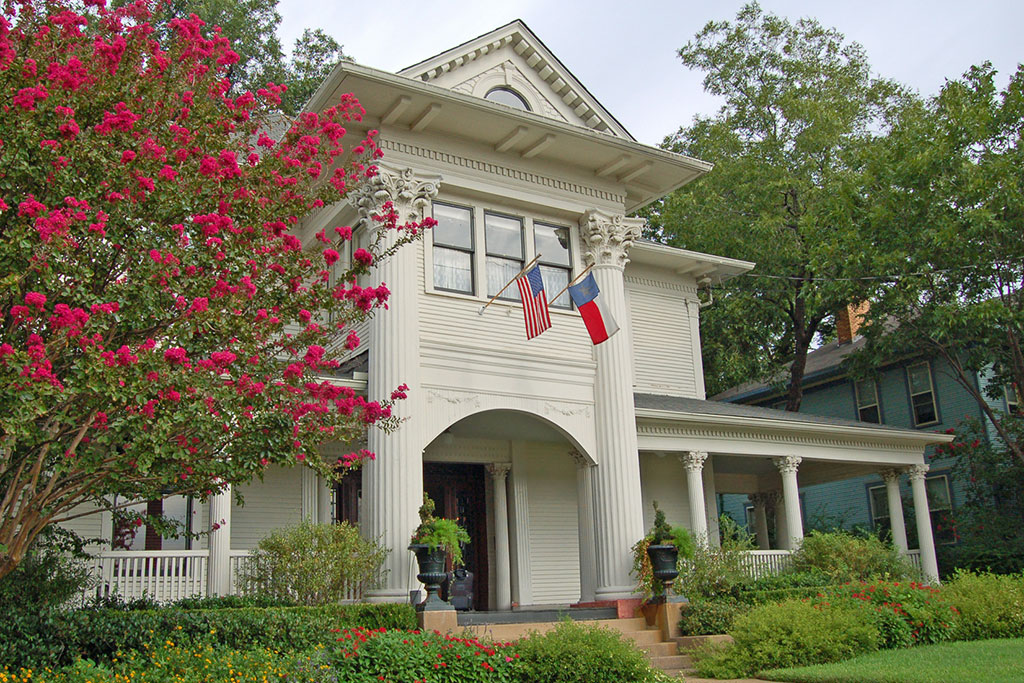
The National Park Service maintains an online database of registered historic places, making it relatively easy to browse them. It does contain every single listed building, though, including nonresidential ones, so looking here could muddle your search. A better bet is visiting the National Trust for Historic Preservation’s website, which offers its own digital record in partnership with CIRCA Old Houses—a nationwide marketplace of historic homes for sale. This catalog allows you to search by state, minimum and maximum price, style, and acreage to narrow your hunt to only properties of interest to you.
As with any home purchase, once you’ve begun browsing through listings, it’s wise to consult the expertise of a real estate agent. They can assist you in establishing a budget, locating options within your price limit and specifications, and even navigating local laws concerning the ownership of this property type.

Given that historic homes are private property, owners are not required by federal law to maintain them, whether they’re listed on the national register or located within a historic district. However, states and localities can also designate places as historic, which may subject to them local ordinances that limit what changes owners can make to them. It’s important to familiarize yourself with these restrictions before buying so you can better know what you’re getting into.
You’ll also need to be prepared for a variety of different maintenance concerns. Not all houses will require a lot of work, but there’s a good chance you’ll have to invest more money into renovations than you would a typical home. A thorough inspection—preferably one conducted by an inspector familiar with historic homes—may help ensure that there are no skeletons, such as safety code violations, hiding in the home’s closets.
If you find that significant renovations are in order, here’s a bit of good news: thanks in part to the efforts of the National Trust for Historic Preservation, most states provide historic tax credits that can benefit homeowners during the preservation process. Some even offer grants specific to historic home renovations. These types of financial assistance usually come with stipulations, though, so be advised that you may only be able to use the funds for certain improvements. Your state historic preservation office should be able to help you with gaining access to these programs and understanding their terms.
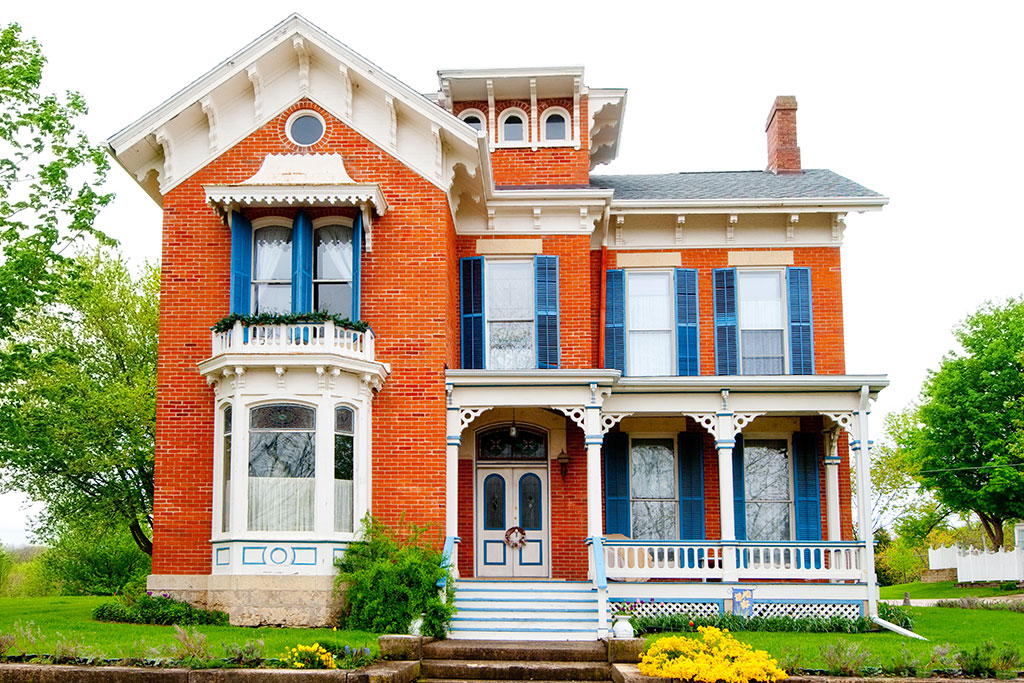
A major point of buying a historic home is to keep its history alive, which can make updating it a tricky balancing act. You can, however, preserve its rich past while bringing it into the twenty-first century by simply doing some research into the design trends of the era it was built during. For instance, highly desirable Victorian-era homes were all about maximalism—which happens to be in vogue once again. Incorporating wallpaper, stained glass, and deep colors could be appropriate options when renovating a home in this style.
Ultimately, it’s important to consider your personal tastes and how you may be able to blend them with the home’s original design. It may require a lot of time and energy, but imagine getting to walk through your home after restoring it to its former glory—what a gift that would be.
If you’re in the market for a new place and think a historic home might be right for you, reach out to a real estate agent, who can help you land a charming, time-honored space to make your own.
Apple season is nearly here with all its related autumnal activities, from apple picking at a local orchard to pie baking in the kitchen. To make sure you’re ready to enjoy it to the fullest, refer to the following guide on popular apple varieties along with two recipes that are so good, you’ll want to add them to your year-round meal and drink rotation.
Explore ten of the tastiest apples, including their distinguishing characteristics and the best ways to use each one.
Apple and orange slices are brewed with a medley of spices to create this delightful and aromatic beverage.
Fall into autumn with this unique take on one of America’s most beloved dishes, which perfectly blends fruity and smoky flavors with a hint of thyme.
A quintessentially healthy and delicious food, apples make for an ideal snack, dessert filling, or addition to a sweet and savory dish. And with fall around the corner, they’ll soon be in peak season, making it the perfect time to incorporate them in your recipes. Given the broad array of colors, textures, and flavors, however, deciding on the optimal choice can be perplexing. Peruse this guide to discover which apples to select for what purpose and how to better ensure that they’re at their freshest.

While there are more than one hundred different kinds of apples grown in the United States, here are some of the most popular ones along with their best uses.
Empire
Developed at Cornell University in the 1940s from McIntosh and Red Delicious apples, Empires are typically deep red in color, crisp, and sweet. Resistant to bruising, they make a great lunch box choice and can be tasty in salads and pies.
Fuji
Anyone with a sweet tooth may adore this variety, which was bred in Japan and named for its famous mountain peak. A cross between Red Delicious and Ralls Janet apples, the Fuji is red with hints of yellow and can be wonderful as a snack or in recipes such as salads.
Gala
This golden-yellow and red variety from New Zealand is a hybrid of Golden Delicious and Kidd’s Orange Red apples. It makes for a simple and delicately sweet dessert when topped with a little sea salt and is also great for applesauce and cider.
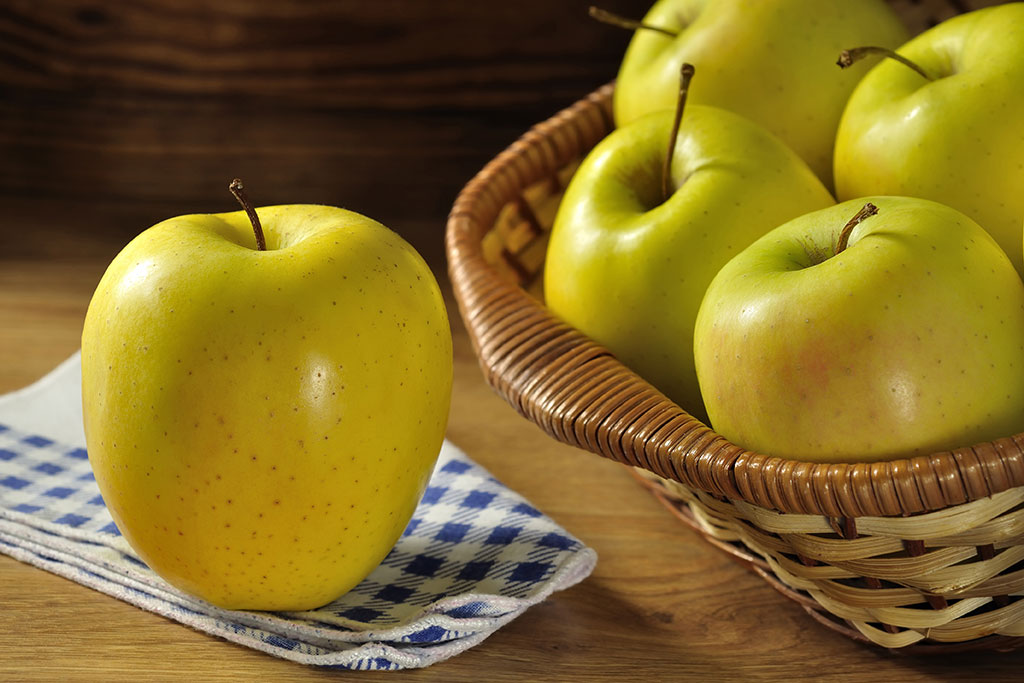
Golden Delicious
Discovered growing by accident on a family farm in West Virginia, the Golden Delicious is mildly sweet and sports a yellow hue. It’s an all-purpose apple that works well in salads, sauces, and baking.
Granny Smith
This eye-catching, bright-green apple, originally from Australia, is beloved for its tart flavor and crisp, firm texture. Perhaps the most typical choice for apple pies, it’s also excellent as a snack or in cake.
Honeycrisp
Featuring a mottled red skin with specks of yellow, these extra crispy and juicy apples originated at the University of Minnesota and are delightful on their own or in sweet and savory recipes. They can be kept for up to seven months in refrigerated storage, allowing you to enjoy them all year.
Jazz
Unlike their musical counterpart, Jazz apples got their start not in New Orleans but in New Zealand. Firm and crunchy with a mix of red, yellow, and orange coloring, they are amazing in cobblers, crumbles, and stuffing.

McIntosh
John McIntosh found the first sapling for this crimson variety on his farm in Canada in the early nineteenth century. They are crunchy and sweet but slightly acidic, and you can eat them fresh, in applesauce, or in pies.
Pink Lady
Named for its slightly pink skin, the Pink Lady was first made by crossing Golden Delicious and Lady Williams apples in the 1970s. This cultivar is refreshing despite its slightly tart flavor and is resistant to browning, making it ideal for fruit plates and salads.
Rome
These deep-red, round apples, developed from a seedling found in Rome, Ohio, are good as-is but are primarily chosen for baking and applesauce. Because they can hold their shape when hollowed, stuffed, and cooked, they are often used to make baked apples.

Once you’ve narrowed down what kind of apple to buy, you’ll want to make sure they’re as fresh as possible. When shopping, look for ones that are firm to the touch, have a pleasing aroma, and are free of bruises or nicks. After you get your apples home, you can keep them on your countertop for one or two weeks, but they will last longer, around six to eight weeks, when stored in your refrigerator’s crisper drawer. If you put them in a bag for storage, be sure not to seal it—apples are big producers of ethylene gas, which can lead them to ripen faster. Also keep them away from other produce that is especially susceptible to this substance, such as avocados, lemons, and grapes.
The next time you head to your local orchard or produce section, you can use what you’ve learned in this guide to select apples you’ll adore—whether you choose to dip them in peanut butter, mix them into a cobbler, or bake them in an apple crisp.
Hot apple cider is often regarded as a seasonal treat you have to wait all year for, but it’s actually simple to make yourself! All you need is fresh apples, an orange, spices, and water—throw them together in a slow cooker, and you’ll soon have a deliciously spiced beverage that smells as good as it tastes.
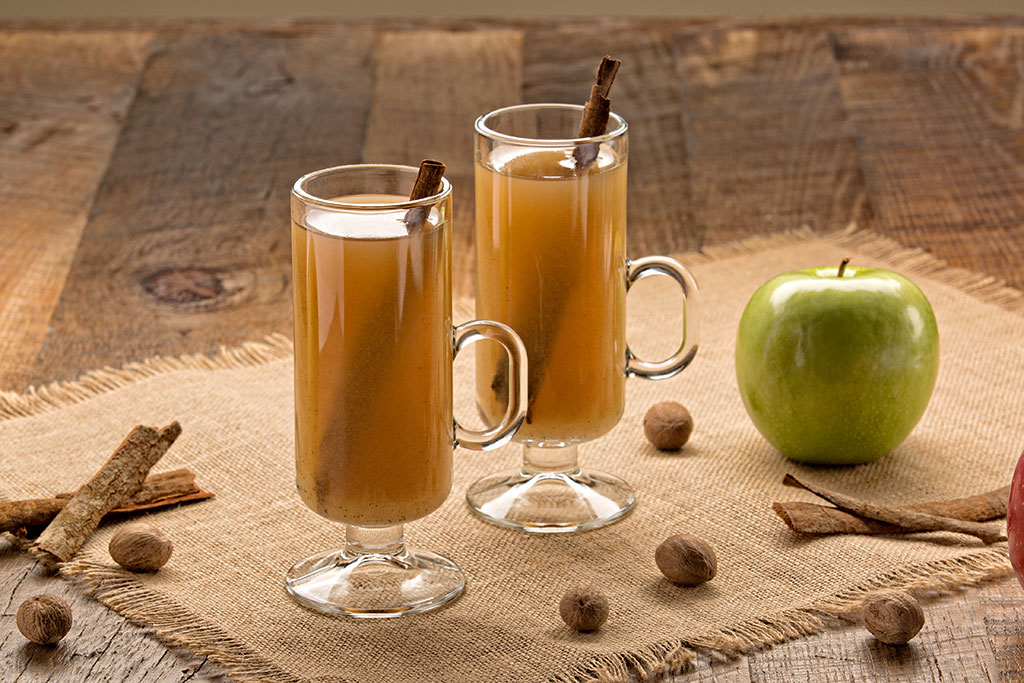
Serves 8–10
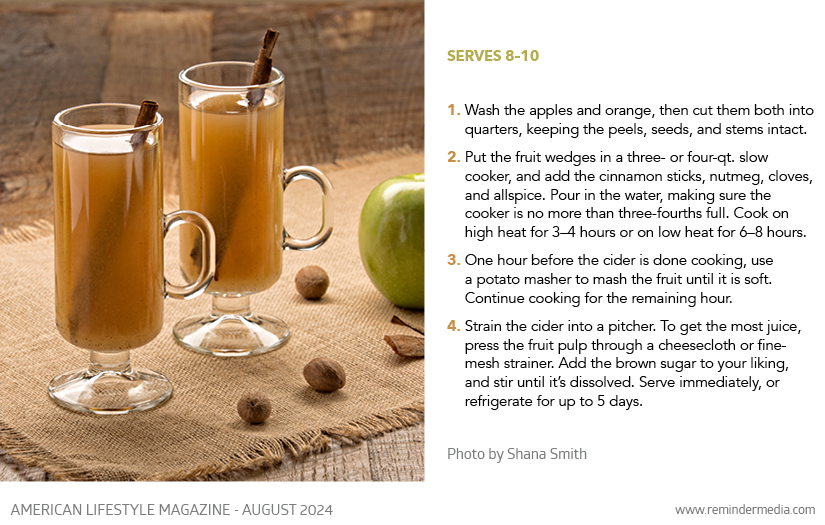

You can’t go wrong with sweet and salty, especially with this pizza recipe, which boasts a mix of apples, onions, and bacon in every sensational slice!

Serves 8


If you’ve ever a taken long drive down a meandering stretch of highway, you may be familiar with the intriguing advertisements that tend to dot the landscape, beckoning travelers to explore gems nestled in nearby small towns. From towering monuments to captivating curiosities, America boasts an array of roadside attractions that offer weary tourists a refreshing pause from their lengthy journeys. Here’s a closer look at six of the most extraordinary of these destinations and what makes each one unique.
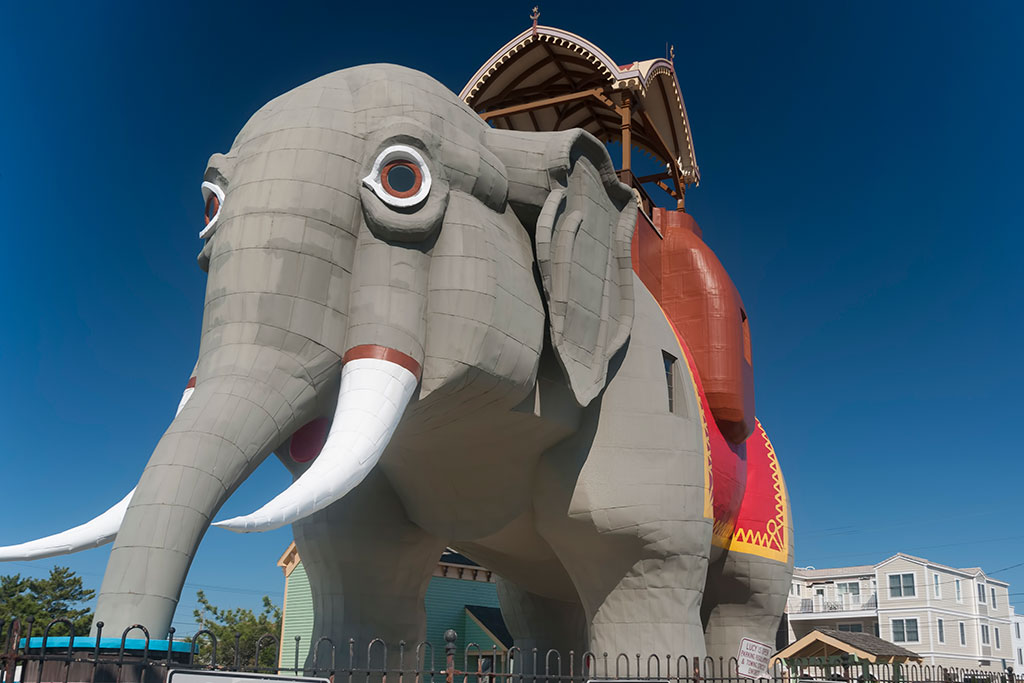
One of three elephants designed and built by engineer and inventor James Lafferty, Lucy the Elephant is the only one that remains today. The building has served many purposes since it was erected in 1881; originally constructed to draw homebuyers to the area, it has operated as a tavern and a residence before becoming a roadside attraction. Lucy was actually set to be demolished in the sixties but was saved by a community campaign, even gaining designation as a National Historic Landmark in 1976 and being fully restored in 2000. Visitors can take a guided tour through the six-story architectural marvel, which begins through a spiral staircase inside one of the elephant’s legs. Operating hours vary throughout the year, so be sure to check the attraction’s website for the most up-to-date information.

A 2019 entry to the National Register of Historic Places, this Illinois destination offers travelers the opportunity to see a half-sized replica of one of Italy’s most famous architectural wonders—the Leaning Tower of Pisa. The structure was completed in 1934 and, after decades of freeze-thaw cycles that caused cracking, was restored to its original glory in the nineties. In addition to the tower, visitors can observe four fountains and a thirty-foot reflecting pool on the premises. Bells also ring at various times throughout the day, playing familiar tunes like “On Top of Old Smokey” and “My Favorite Things.” So if you don’t expect to make it to Europe any time soon, consider popping by this attraction located just northwest of Chicago for an akin yet entirely unique experience.

What started as a simple local drug store in South Dakota has since transformed into one of the world’s most well-known tourist attractions, becoming a must-see spot for those traveling to sites like Rapid City, Mount Rushmore, and Badlands National Park. Visitors can take a break in Wall Drug’s Western Art Gallery Restaurant, which is filled with art and illustrations and offers burgers, donuts, and five-cent coffee. During the summer months, kids can enjoy the backyard area with a water show, mini Mount Rushmore, life-sized robotic T-Rex, and much more. And don’t forgo the delicacy that helped Wall Drug earn its initial success in the 1930s—a free glass of refreshing ice water.

In 1974, a group of artists from San Francisco worked with a local entrepreneur to do something a little different in Amarillo, Texas: bury ten Cadillacs nose deep in the dirt at the same angle as the Great Pyramid of Giza. It’s no wonder the installation baffled locals at the time. Since its creation, it has become a hit tourist spot along Route 66; the cars are continually covered in new graffiti-style art as more people stop by to add their signatures to the art piece. You never know what fresh designs you might see each time you take a break at Cadillac Ranch.
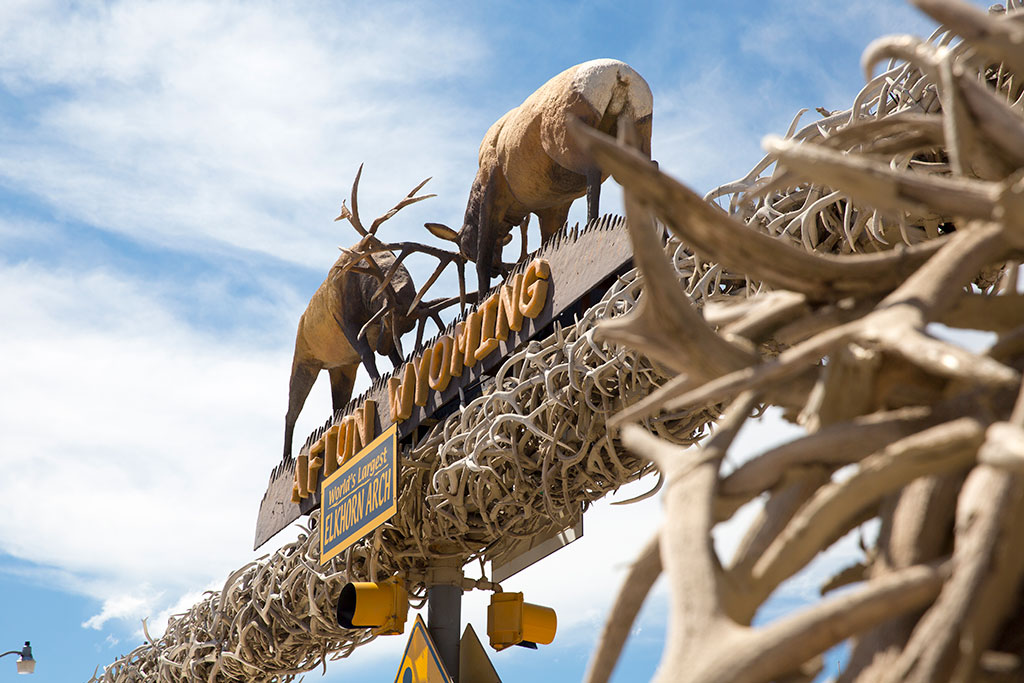
Spanning Route 89 near the Idaho border in Afton, Wyoming, this attraction may not be as widely known as Jackson Hole’s Elk Antler Arch, but it is considerably larger. Standing eighteen feet tall and seventy-five feet wide, the arch is constructed entirely of foraged elk antlers and topped with two life-sized bull elk carved from wood. Fear not, however: no animals were harmed in the making of this structure. Elk naturally shed their antlers every spring, so the Afton Chamber of Commerce decided to put them to good use by crafting an arch to welcome visitors to and through the rustic Wyoming town.

Have you ever been in a 5,000-square-foot home carved into the side of a rock? If not, you have the chance to do so at this attraction on Highway 191 just fifteen miles south of Moab, Utah. Construction of this unique residence started in the 1940s, carving out fourteen rooms, an inset bathtub, and even a sixty-five-foot chimney. The original owners resided there until the seventies, with the wife building a gift shop and opening the home up for tours before she passed. Take a walk through the vast grounds, then visit the general store or the petting zoo, which features an ostrich, a mini donkey, peacocks, and more. You’ve likely never seen a landmark quite like this, so if you find yourself traveling through the Beehive State, make sure to take a detour to this literal hole-in-the-wall attraction.
As you embark on your next road trip, consider going off book and exploring some of America’s most interesting roadside stops. You never know what marvels you might encounter or unforgettable experiences you might have when you venture off the beaten path.





